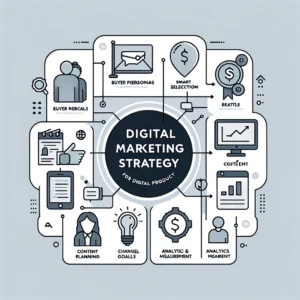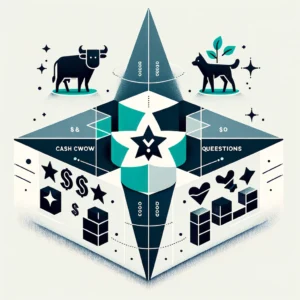
In the fast-paced world of digital experiences, where our attention spans often resemble a fleeting glance, businesses are on a perpetual quest to captivate users and turn them into loyal customers. Enter the magical realm of gamification, a strategy that’s akin to the Pied Piper’s enchanting tune, leading users down the path of increased conversion and unwavering loyalty.
Gamification is a fancy word for something quite simple.
It’s about using game elements to make everyday tasks more engaging and enjoyable. Whether you’re unlocking achievements, earning badges, or competing with friends, you’ve likely encountered gamification in your apps, websites, or even loyalty programs.
But what’s the big deal, you ask?
Need help in gamification? Lets talk!
Well, the answer is straightforward. Gamification can be a game-changer (pun intended) for your business. It’s the secret sauce that can make your website visitors take action, like making a purchase or signing up for a newsletter. It’s also the invisible thread that keeps your users coming back, again and again.
In this article, we’re going to embark on an exciting journey through the world of gamification. We’ll uncover what gamification is and how it works its enchantment. We’ll explore how you can use it to boost your conversion rates, turning curious visitors into loyal customers. So, let’s roll up our sleeves, get ready to level up, and discover how gamification can transform your digital world.
Gamification: A Fun Twist on Conversions
Picture this: You visit a website, and it welcomes you with a cheerful message – “Congratulations! You’ve just earned 50 points for being here!” Intriguing, right? That’s gamification in action, and it’s a game-changer when it comes to improving conversion rates.
But what is gamification, you ask?
It’s a clever way to add game elements to non-game situations. It’s about making things fun, engaging, and rewarding. Think of those loyalty cards you get from your favorite coffee shop – buy ten cups, get one free. It’s a simple example of gamification.
So, how does gamification work its magic on conversions?
Well, it’s like a digital motivator. It nudges your website visitors to take action. Whether it’s signing up for a newsletter, making a purchase, or completing a survey, gamification makes it more appealing.
Here’s the secret sauce:
It taps into our natural human desire for rewards and recognition. When you earn points, collect badges, or complete challenges, your brain releases a little dose of happiness. It’s a bit like getting a gold star on your homework. And that feeling of accomplishment can drive people to take the next step.
Now, let’s get practical.
How can you use gamification to boost your conversion rates? It’s all about understanding your audience, setting clear goals, and designing game elements that fit your website or app. You can create challenges, offer prizes, or simply acknowledge and reward user actions.
In the next sections, we’ll dive deeper into these strategies and show you real-world examples of businesses that have used gamification to turn visitors into happy customers. So, get ready to unlock the treasure chest of conversion improvement with the power of gamification. It’s a journey that’s as enjoyable as it is rewarding.
Introducing Gamification: Turning Visitors into Customers
In the vast landscape of online business, there’s a quest we all embark on – the quest for better conversion rates. It’s the art of turning curious visitors into loyal customers. And in this journey, gamification is your trusty sidekick.
“But what on earth is gamification?”
you might ask. Well, think of it as turning everyday tasks into games. It’s about adding a sprinkle of fun to your website or app to make it more engaging. Those points you earn, the badges you collect, and the challenges you complete – that’s gamification in action.
Now, why should you care?
Because gamification is like a turbo boost for your conversion rates. Simply put, it helps more of your visitors take the actions you want them to take. Whether it’s signing up, making a purchase, or subscribing to your newsletter, gamification makes it more enticing.
Here’s the beauty of it:
Gamification taps into our natural human desires for rewards and recognition. It’s like getting a high-five for every little achievement. And that feeling of accomplishment drives people to keep going.
So, how can you make gamification work for your business?
It’s all about understanding your audience, setting clear goals, and creating game elements that match your website or app. You can design challenges, offer prizes, or simply acknowledge and reward user actions.
In the following sections, we’ll roll up our sleeves and explore practical strategies, real-world success stories, and the future of gamification. By the end, you’ll have the keys to boost your conversion rates and delight your visitors with the magic of gamification. Get ready to level up your online business!
Building Unwavering Loyalty through Gamification
Imagine your website or app as a cozy cafe. Visitors are like the patrons who walk in, enjoy a cup of your content, and then decide whether to return. Now, what if you could turn them into regulars, the kind who can’t resist coming back for more? That’s the enchanting power of gamification when it comes to fostering user loyalty.
“But how does gamification work its charm on user loyalty?”
It’s pretty straightforward. Gamification transforms your platform into an engaging playground. Think of it as turning your cafe into a place where every visit feels like a delightful adventure.
Here’s the secret sauce:
Gamification rewards and recognition. When users collect points, achieve badges, or complete challenges, it triggers a sense of achievement and belonging. It’s like giving them a gold star for being a loyal customer. This positive feeling builds a strong bond with your brand.
So, what can you do to keep users coming back for more?
It’s about creating a user experience that feels like a game. You can design loyalty programs, where users earn rewards for their actions, like making purchases or referring friends. Or you can offer badges for reaching milestones, such as completing a certain number of tasks.
In the sections ahead, we’ll dive deeper into the strategies and practical tips to make gamification a cornerstone of your user loyalty efforts. We’ll also explore real-world examples of businesses that have turned occasional visitors into die-hard fans. By the end of this journey, you’ll have all the ingredients you need to cultivate unwavering user loyalty through the magic of gamification. So, let’s make every user feel like a cherished regular in your digital cafe.
Understanding Success: Metrics for Gamified Experiences
Picture this: you’ve embarked on a gamification journey to boost your website’s performance. You’ve added game elements, created challenges, and rewarded your users for their actions. Now, the important question is, “Is it working?” That’s where metrics come into play, and they’re your compass for measuring the impact of gamified experiences.
Let’s start with the basics. Metrics are like road signs on your gamification path, telling you if you’re moving in the right direction. They provide valuable insights into what’s working and what needs a tweak.
Here are some key metrics you should know:
- Conversion Rate: This is the holy grail. It tells you how many visitors are taking the desired action, like signing up or making a purchase. It’s like counting how many treasure chests you’ve found.
- Engagement Level: This metric measures how involved users are with your gamified elements. Are they collecting badges? Completing challenges? It’s like keeping track of how many players are actively exploring your game.
- Retention Rate: This tells you how many users stick around after their initial visit. High retention means users are enjoying the game. It’s like counting how many adventurers return to your magical world.
- Time Spent: This metric shows how much time users are investing in your gamified experiences. Longer times mean more engagement. It’s like noticing how long your visitors linger in your virtual world.
- Points Earned: The points your users earn are like tokens of achievement. It’s a direct measure of their participation in the game.
- Prizes Claimed: This tells you how many users are motivated by rewards. It’s like counting how many treasure hunters are cashing in their loot.
Now, why are these metrics important? Well, they help you understand whether your gamification efforts are paying off. They show you where your visitors are on their journey and whether they’re having a good time.
In the next sections, we’ll delve deeper into how to use these metrics effectively. We’ll show you how to interpret the signs and adjust your gamification strategy for maximum impact. By the end, you’ll be equipped with the tools to navigate the world of gamified experiences like a seasoned explorer, and you’ll know precisely how to measure your success. So, let’s set sail on this data-driven adventure!
Real-life Adventures in Gamification
It’s one thing to talk about gamification in theory, but it’s another to see it in action. Let’s take a step back from the theory and dive into some real-world success stories that prove the power of gamification in action.
1. Duolingo – The Language Learning Game:
Learning a new language can be a daunting task, but Duolingo turned it into an engaging adventure. Users earn points, unlock achievements, and compete with friends while learning. As a result, Duolingo boasts over 300 million users, proving that gamification can make learning fun and addictive.
2. Starbucks – The Gold Star Loyalty Program:
Starbucks turned their loyalty program into a gamified experience with their “Gold Star” system. Customers earn stars for each purchase, and as they accumulate more stars, they level up and unlock exclusive rewards. This not only boosted customer loyalty but also increased their revenue significantly.
3. Nike+ – Turning Running into a Game:
Nike+ created a running app that tracks your runs and turns them into a game. You can set goals, earn badges, and compete with friends. This gamified approach has encouraged people to run more, stay active, and remain loyal to the brand.
4. Habitica – Turning Life into a Role-playing Game:
Habitica is a to-do list app that turns your daily tasks into monsters to conquer. Completing tasks earns you experience points and rewards for your in-game character. It’s a fun and effective way to keep users engaged and productive.
5. LinkedIn – Unlocking the “All-Star” Profile:
LinkedIn gamified the process of completing your profile. Users are encouraged to reach an “All-Star” profile status by filling in all the necessary information. This has led to increased user engagement and more robust profiles.
These real-world examples show that gamification isn’t just a theoretical concept; it’s a powerful tool that can be applied to various industries and scenarios. These businesses turned everyday activities into engaging games, resulting in increased user engagement, loyalty, and success. So, the next time you sip your Starbucks coffee or complete a Duolingo lesson, you’ll know that gamification played a part in making these experiences more enjoyable and rewarding. It’s like turning everyday life into an exciting game.
The Future of Gamification: What Lies Ahead?
Imagine you’re in a world where technology keeps evolving, and user preferences are ever-changing. It’s like sailing through uncharted waters, and gamification is your compass to navigate this dynamic landscape. In this section, we’ll explore the latest trends and innovations in the world of gamification, giving you a sneak peek into what’s on the horizon.
1. Mobile Gamification:
With the majority of users now on mobile devices, the future of gamification is mobile-first. Expect to see more apps and platforms integrating gamified elements into their mobile experiences. From fitness apps that track your steps to educational apps making learning more interactive, mobile gamification is set to soar.
2. Personalization:
The next big thing is personalized gamification. Instead of one-size-fits-all approaches, businesses are using data to tailor gamification to individual user preferences. This means more relevant challenges, rewards, and experiences, which can be a game-changer for engagement.
3. Social Integration:
Gamification and social media go hand in hand. The future will bring even more seamless integration with social platforms. Users will be able to compete with friends, share achievements, and see how they stack up against the global community.
4. Augmented Reality (AR) and Virtual Reality (VR):
Imagine a world where gamification meets AR and VR. Gamified experiences will become even more immersive and interactive, blurring the lines between the digital and physical worlds. From educational simulations to gamified workouts, the possibilities are endless.
5. Sustainability and Social Impact:
Gamification isn’t just for fun; it can also be a force for good. We’ll see more gamification aimed at promoting sustainability and social impact. Users will be rewarded for eco-friendly actions or charitable contributions, making the world a better place one game at a time.
6. Artificial Intelligence (AI):
AI is set to take gamification to the next level. With AI-powered recommendations, personalized challenges, and real-time feedback, users will feel like they have a personal game coach, enhancing their experience and driving engagement.
As the world evolves, so does gamification. These trends and innovations offer a glimpse into a future where gamification becomes an integral part of our daily lives. It’s not just about fun and games; it’s about creating more engaging, personalized, and impactful experiences. So, keep your eyes on the horizon, because the world of gamification is constantly evolving, and the best is yet to come.
Bringing Gamification to Life: Practical Steps for Your Business
So, you’ve read about the wonders of gamification, and you’re eager to bring this magic to your business. Well, you’re in the right place. In this section, we’ll walk you through practical steps to implement gamification effectively. It’s time to roll up your sleeves and turn your aspirations into action.
1. Define Your Goals:
Start with a clear understanding of what you want to achieve. Are you aiming to boost sales, increase user engagement, or promote a sense of community? Defining your objectives is like setting sail with a destination in mind.
2. Know Your Audience:
Understand your users’ preferences, behaviors, and motivations. What do they find engaging, and what rewards resonate with them? It’s like speaking their language and creating a game they want to play.
3. Choose the Right Gamification Elements:
Select game elements that align with your goals and audience. Will you use points, badges, leaderboards, or something else entirely? It’s like picking the tools for your gamification toolkit.
4. Design a User-friendly Experience:
Your gamified experience should be seamless and intuitive. Users shouldn’t feel like they’re playing a complex game; it should enhance their interaction with your platform.
5. Create Clear Rules and Instructions
Make sure users understand how the gamification works. It’s like giving them a rulebook to play the game. Transparency is key.
6. Test and Iterate:
Don’t expect perfection from day one. Start small, test, gather feedback, and improve. It’s like refining your game as you go, making it more enjoyable and engaging.
7. Monitor and Measure:
Use the metrics we discussed earlier to keep an eye on your progress. Are you meeting your goals? If not, adjust your gamification strategy.
8. Celebrate Success:
Recognize and reward your users’ achievements. It’s like throwing a virtual party to acknowledge their efforts.
9. Keep it Fresh:
Gamification isn’t a one-time effort. Continuously update and innovate to keep your users engaged. It’s like adding new levels and challenges to a game to maintain interest.
By following these steps, you’ll be well on your way to successfully implementing gamification in your business. Remember, it’s not just about creating a game; it’s about creating an engaging experience that drives real results. So, embark on your gamification journey, and watch your business flourish in the world of fun and rewards.
Summary: Navigating Success with Gamification
In the world of digital experiences, the strategic use of gamification has the power to transform ordinary interactions into engaging adventures. From boosting conversion rates to fostering unwavering user loyalty, gamification’s magic lies in its ability to turn everyday actions into exciting games.
As we’ve explored in this article, gamification isn’t just a buzzword; it’s a practical tool that can elevate your business. Real-world success stories have demonstrated how gamification can turn occasional visitors into dedicated fans, and we’ve glimpsed into the future of gamification, where personalization, social integration, and emerging technologies promise to take user engagement to new heights.
Implementing gamification is an achievable goal, and it starts with defining your objectives, understanding your audience, and selecting the right game elements. By following the practical steps outlined here, you can embark on your gamification journey and watch your business thrive in the world of fun and rewards.
So, whether you’re seeking to increase conversion rates, foster user loyalty, or simply create a more engaging digital experience, gamification is your compass. It’s a journey filled with rewards, and it’s time to set sail into this exciting realm. As the saying goes, “The game is afoot,” and success awaits those who embrace the magic of gamification.



